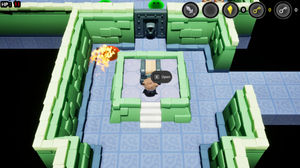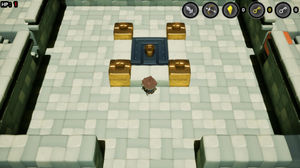Jim's Adventure
Type:
Group Project
Responsiblites
-
Designed two dungeon and ground levels
-
Designed game mechanices of the the entire game
-
Help implementing some blueprints like breakable pot and level portal
-
Concept art for main character
-
Final level decoration
Video LInk:
Software Used
UE5, Blueprints, ClipArtStudio
GENRE
Action Adventure, Puzzle Solving
Playable File

Gameplay
OverView
In the game, your princess is lost again. So, you need to once again step on your adventure road to the castle, using your sword and bow to solve the puzzle, fight the smile, and save your princess. The core gameplay of the game is just like every 2D Zelda game. We have all kinds of puzzles that are settled in the different theme-based dungeons that are waiting for you! In the different dungeons, you will encounter different items and different tricks that have unique abilities that will help you on your road to adventure! Use them to solve the unique puzzle that is designed for them!
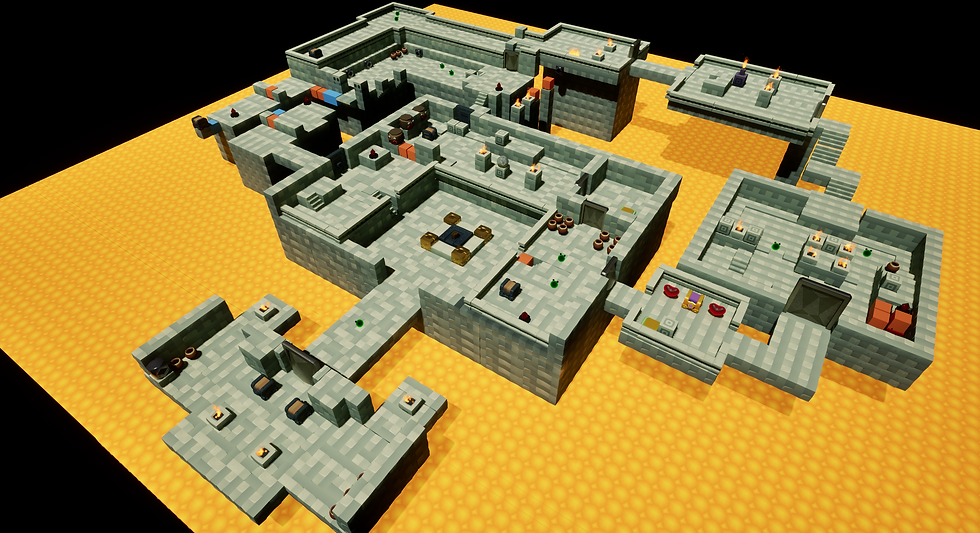
Development Process
Prototypes


Game pitch
The initial idea for the game pitch focused heavily on combat. However, during development, we realized that creating enemy AI was far more complex than our team could handle. As a result, we reduced the scope to just one enemy type and redirected our resources toward designing Zelda-style puzzles.
Concept Art

Main Character
Credit: Frank
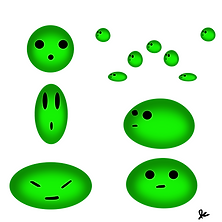
Enemy Slim
Credit: Joren
Testing Mechamics
Pushing Blocks
Fire Arrow
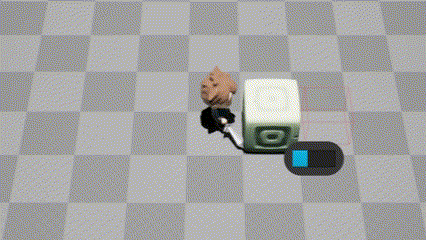

Lever
Push Block Torch


Level Iteration



First Dungeon



The first playable level for Jim’s Adventure went through a lot of changes over the course of development. The goal with the level design was to make it challenging for the player without being tedious. Our earlier level designs featured a lot of elements that only existed to make it more annoying for the player to solve the puzzle. These elements didn’t make the levels more challenging, just more tedious. We changed this to be more fun for the player while still maintaining another challenge. Another change that was made was in the feel of the rooms. The original design was much more dedicated to separate box-like areas with less connected elements. We decided to make the rooms more connected in the later designs.
Second Dungeon

The design of the second playable level remained largely unchanged over time. The only major adjustment was the gradual addition of assets. Since the design followed similar patterns to the first level, few modifications were necessary.
Overworld



The overworld was initially planned to be a large expansive area for the player to explore. There would be some small puzzles and enemies here for the player to deal with before the dungeon. There was also the idea of having shortcuts to the dungeon levels in the overworld. As our game lowered scope, the overworld shrunk as well. We found that it had become more tedious to travel the initially large overworld, and didn’t have engaging puzzles, so the journey was boring. The overworld was shrunk to get the player to the puzzles and more interesting elements quicker. The shortcuts were also removed as we decided resetting from the last dungeon was faster, and our game was linear anyways.
Boss Level


The boss level was added very late towards the development and changed a lot. Initially it was a single room that the player spawned in, where puzzles would spawn as well as obstacles. This was all controlled by one game object which would spawn in corresponding walls based on the desired room size. This was changed to a set of three rooms the player would have to complete. This was easier to control and design for, and overall made for a much better player experience.
Credits

